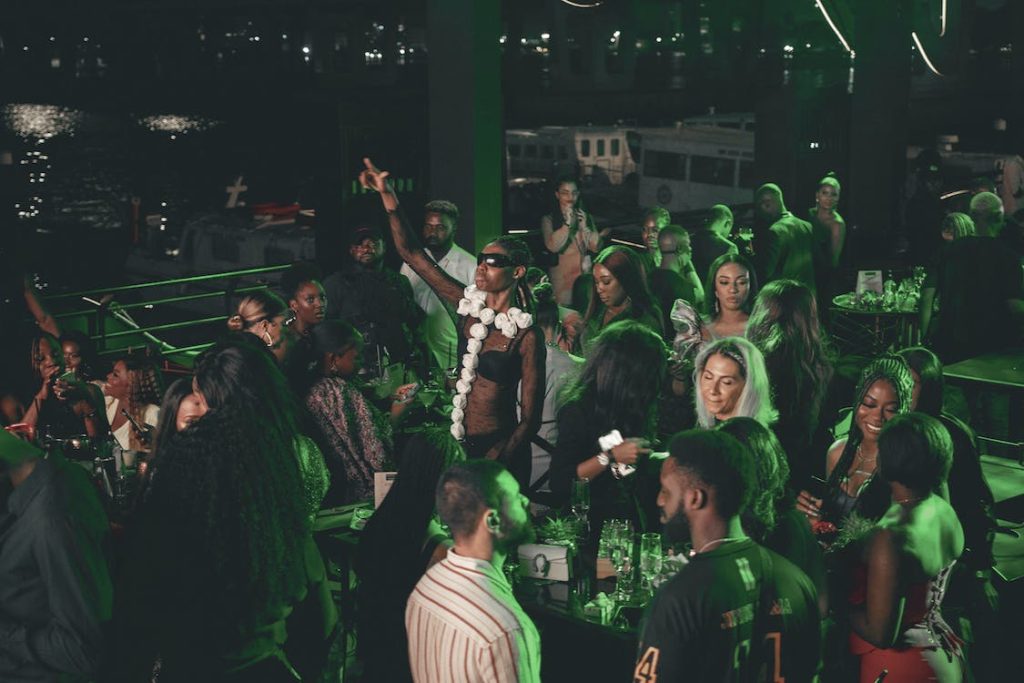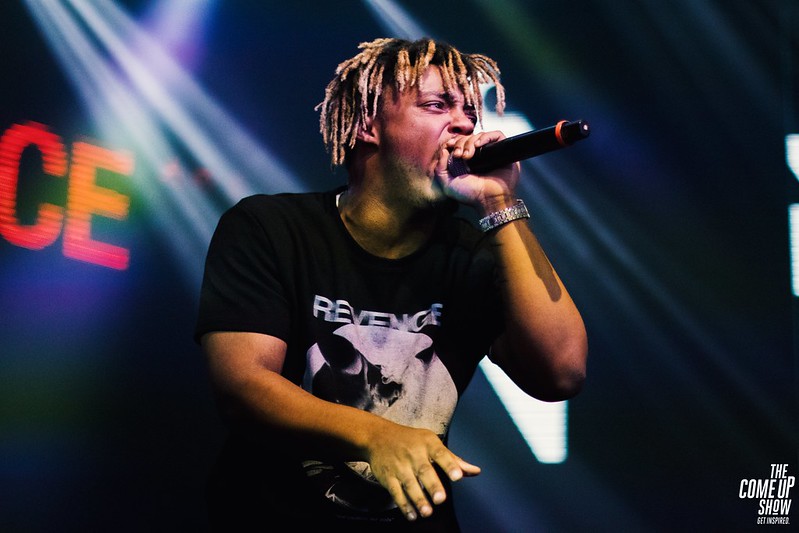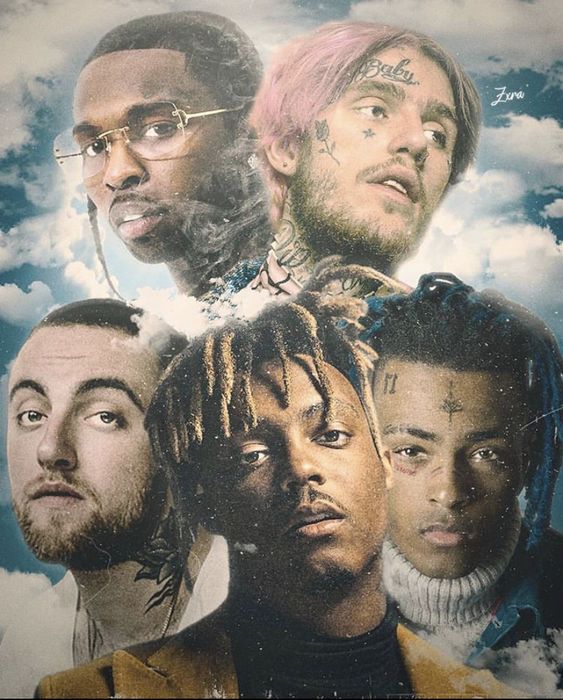The glorification of heavy drug use in mass media has resulted in the early deaths of many celebrities. In today’s society, drug use is often portrayed as a normal part of life, and in some cases, is even seen as a glamorous lifestyle choice. The influence of celebrities on societal attitudes towards drug use has been a topic of discussion for many years. Celebrities are often seen as role models, and when they are shown using drugs in movies, TV shows, or music videos, it sends a message to their fans that drug use is acceptable or even desirable[1].
In recent times, the rise of social media has made it easier for celebrities to reach a wider audience, and their influence on society has become more pronounced. It was found that young people who idolized celebrities were more likely to use drugs than those who did not[1][2]. This shows that celebrities have the power to shape the attitudes and behaviors of young people towards drug use. These findings highlight the need for celebrities to be aware of their influence on young people and to use their platform responsibly. It is crucial for celebrities to promote healthy behaviors and attitudes towards drug use to their fans. This article is an adaption of wikipedia sources , “Juice WRLD“,”27 Club“,”Drug Overdose“, and “Emo-Rap” in order to establish a connection between an oversaturation of drug related talks, or lyrics and the increase in youth drug abuse, or overall drug abuse.
Addiction
The music industry has long glorified the use of drugs, leading to a severe lack of awareness about the dangers they pose. Fans are under the impression that drug use is an essential ingredient in the fast-paced, glamorous lifestyle of musicians, and that moderation is the key to safe consumption. However, this is far from the truth, as drug use is a slippery slope which can quickly spiral out of control and have life-threatening consequences.
The media’s portrayal of drugs as edgy, cool, and rebellious has created a culture where new artists feel the need to conform to these ideals to make a lasting impression on their audience. The pressure to maintain a seemingly never-ending cycle of parties and thrill-seeking activities has masked the true dangers of drug abuse. Unfortunately, this has resulted in high rates of drug abuse, particularly with opioids and alcohol. When exposed they become vulnerable to high rates of drug (specifically opioids), and alcohol abuse[4].

Along with the lumpsum of money which is earned while being a up-and-coming artist, they have the networking ability to now acquire pharmaceutical, or illegal drugs such as Xanax, fentanyl, OxyContin, and Percocet[6]. Along with being an artist, the stress accumulated from tour, shows, finance, social life, and lack of privacy drive many stars to dangerous drugs as a means of coping. Often artists are inspired by other artists to pick up on these habits, and almost always result in addiction, rehabilitation or death. When addicted to an opiod, the path is a harsh and debilitating often resulting in a relapse.
Celebrities who struggle with addiction are often under intense pressure, both from their fans and from the media, which can exacerbate their addiction and make it more difficult for them to seek help. In some cases, celebrities may also use drugs to cope with the stress of their fame or to enhance their creativity[7]. This normalization of drug use has contributed to the rise of substance abuse and addiction, particularly among young people. There needs to be a increased awareness to the effects of high risk lifestyles on celebrities and fans alike.
(Emo)tional Rap
Over the past decade, a new sub-genre of rap music has emerged on Soundcloud, known as “emo rap”. This genre is characterized by its introspective lyrics, often dealing with themes of depression, anxiety, and heartbreak[8]. For many fans, emo rap’s portrayal of drug abuse may serve as a relatable expression of their own struggles or experiences. However, emo rap has also been criticized for its glorification of drug use, particularly in the form of prescription drugs like Xanax and Oxycontin.
While drug references in rap music are nothing new, the prevalence of drug use in emo rap is notable. Many of the genre’s most popular artists, including Lil Peep and Juice WRLD, have passed away from drug-related causes, and have often talked about drug/alcohol abuse casually in many of their lyrics –
“Legends” By Juice WRLD, 2018
“What’s the 27 Club?/ We ain’t making it past 21/ I been going through paranoia/ So I always gotta keep a gun/ Damn, that’s the world we live in now/ Yeah, hold on, just hear me out/ They tell me I’ma be a legend/ I don’t want that title now/ ‘Cause all the legends seem to die out”
“Benz Truck pt.2” Lil Peep, 2017
“All I ever wanted was a friend
All I ever wanted was a brand new Benz truck
Now I wonder where my friends gon’ end up
Money don’t help with the pain, where the drugs at?
Make a few racks, call the plug back”
*A “plug” is a drug dealer
“High Again” Juice WRLD, Unreleased 2018
“All I wanna do is get high with my friends/ If I die in the process I guess thats the end/ Just a kid from a projects I was born to win/ In a world full of darkness I was born to sin/…. If I die high just know that I was mad/ That I aint get the chance to get high again“
“Pills in the Regal” Juice WRLD, Unrealsed 2018
Oh, tell perky I need her
Without her, I get to sweatin’, shakin’, and catchin’ a fever
I know some people regret takin’ the s*** that thеy been takin’
But baby, I can’t take it, so I guess I need it
Juice WRLD, in particular, was known for his music that often talked about his struggles with drug addiction. He was very open about his drug use, and many of his fans saw this as a sign of his authenticity and vulnerability, but it could have very well been a call for help. This glorification of his drug use may have contributed to his overdose. Reports suggest that he swallowed several pills to avoid detection by law enforcement, which ultimately led to his death[9]. This behavior is not uncommon in the music industry, where musicians often use drugs to cope with the pressures of fame and success.

The 27 Club
The 27 Club is a shocking and eerie group of legendary musicians who all passed away at the young age of 27. These artists met their untimely demise due to a variety of high-risk behaviors, such as drug use and suicide. The haunting legacy of the 27 Club began with the death of blues musician Robert Johnson in 1938, but it wasn’t until the 1960s that the idea of a group of musicians dying at the same age captured the public’s attention[10]. The founder of The Rolling Stones, Brian Jones, was the first member of the 27 Club to receive significant media attention after his death in 1969. This tragedy was followed by the loss of two more icons, Jimi Hendrix and Janis Joplin, who both died of deadly drug overdoses later that same year. The following year, Jim Morrison, the lead singer of The Doors, joined the ranks of the 27 Club, and the tragic list continued to grow with the death of Kurt Cobain of Nirvana in 1994.
These young and gifted artists’ deaths cemented the idea of the 27 Club as a cultural phenomenon and a tragic reminder of how fleeting life can be. Unfortunately, the media’s obsession with the 27 Club has had a dangerous impact on young celebrities and their fans. The glamorization of drug use and other high-risk behaviors in popular culture has led many young people to believe that engaging in these activities is a sign of success. This has had a particularly damaging effect on young musicians and actors who are under immense pressure to succeed in their careers and may turn to drugs and other dangerous behaviors as a way of coping. The 27 Club serves as a haunting reminder of the importance of taking care of oneself and seeking help when needed.
Unfortunately, this normalization of drug use has led to many tragic deaths. For example, in recent years, we have seen the deaths of many talented musicians, such as, XXX Tentacion, Mac Miller, Juice WRLD and Lil Peep, all of whom struggled with addiction and passed away at the early age of 20/21, and represent a new version of the the 27 club, the “21 Club” [11].

Musicians have a responsibility to promote healthy choices and addiction resources within their communities. Music has been used as a therapeutic tool to promote physical, emotional, and social well-being for centuries [13]. However, the music industry has also been known to promote excessive alcohol and drug use, leading to addiction and unhealthy lifestyles. Musicians can use their platform to promote healthy choices, such as abstaining from substance abuse, staying physically active, and seeking mental health treatment when necessary. In addition, musicians can also provide resources for those struggling with addiction, such as information on support groups and rehabilitation centers. By doing so, musicians can not only positively impact their fans but also set a positive example for their peers in the industry.
Musicians have an opportunity to make a significant impact within their communities by promoting healthy lifestyles and addiction resources. With their powerful platform, musicians can encourage their fans to make healthy choices, including avoiding substance abuse, keeping active, and prioritizing mental health. Additionally, they can provide resources to those who are battling addiction, such as information on support groups and rehab facilities. A great example of this is Carmella Wallace, the mother of the late Juice WRLD, who founded the Live Free 999 organization. This initiative not only honors her son’s legacy but also supports young people who are struggling with addiction, anxiety, and depression[14]. By following in her footsteps, musicians can inspire positive change within their fan base and serve as role models for their peers in the industry. By taking action like this, musicians and producers can make a significant impact on their fans’ lives and potentially save countless individuals from the grasp of opioid and drug addiction.
This information was sourced from the Wikipedia page “Juice WRLD (musician)” (https://en.wikipedia.org/wiki/Juice_Wrld) and is available and licensed under CC BY-SA 3.0
This information was sourced from the Wikipedia page “27 Club” https://en.wikipedia.org/wiki/27_Club and is available and license under CC BY-SA 3.0
This information was sourced from the Wikipedia page “Drug Overdose” https://en.wikipedia.org/wiki/Drug_overdose and is available and licensed under CC BY-SA 3.0
1.Celebrities and Their Influence on Teenagers, Newport Academy, https://www.newportacademy.com/resources/empowering-teens/celebrities-influence/.
2. “The Effect of Co-creation in a Social Media-Based Brand Community on Behavioral Loyalty”, Hyllegard, Karen H, Journal of Marketing Management https://www-tandfonline-com.unh-proxy01.newhaven.edu/doi/full/10.1080/02650487.2019.1634898.
3. The Glorification of Drugs in Music, Films with a Focus, Youtube. https://www.youtube.com/watch?v=kGzYhuRzWoc
4. “Are Celebrities More Vulnerable to Substance Abuse?” Arizona Addiction Center, https://arizonaaddictioncenter.org/are-celebrities-more-vulnerable-to-substance-abuse/.
5. People Partying in a Beach Club (Photo), Joe Grapy, Pexel https://www.pexels.com/photo/people-partying-in-a-beach-club-12297242/
6.”Scottsdale Recovery Center, Why Do Celebrities Suffer from Addiction?”,https://scottsdalerecovery.com/why-do-celebrities-suffer-from-addiction/
7. “Shame, Addiction and the Death” , ABC News, 2007, abcnews.go.com/Entertainment/story?id=3158259&page=1.
8. “Emo rap.” Wikipedia, The Free Encyclopedia. Wikimedia Foundation, Inc. https://en.wikipedia.org/wiki/Emo_rap.
9. “Juice WRLD Reportedly Took Several Unknown Pills Before Seizure.” Okayplayer, https://www.okayplayer.com/news/juice-wrld-reportedly-took-several-unknown-pills-before-seizure.html.
10. “27 Club.” Wikipedia, The Free Encyclopedia. Wikimedia Foundation, Inc. https://en.wikipedia.org/wiki/27_Club.
11. “21 Club of Rappers: Drugs and Death.” Free Teens Youth, https://freeteensyouth.org/21-club-of-rappers-drugs-and-death/.
12. “Legends”, Mentally Successful”, Photo, Pinterest, https://www.pinterest.com/pin/655907133224582643/
13. “Exploring the Health Benefits of Sound: The Power of Music Therapy.” Mello Studio https://www.mellostudio.com/en/the-power-of-music-therapy-exploring-the-health-benefits-of-sound/.
14.”Live Free 999.” Entertainment Industry Foundation, https://www.eifoundation.org/partners/live-free-999/.